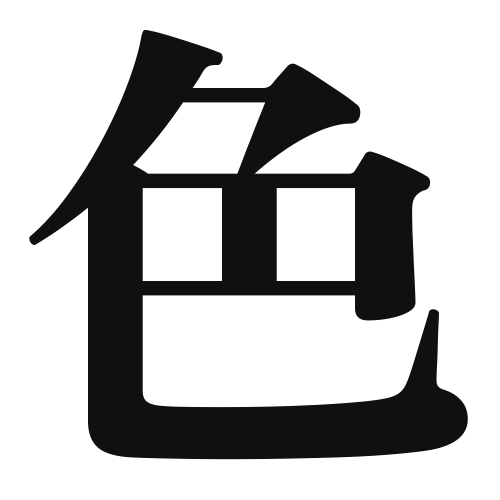1. Overview of Meaning
The kanji “色” (pronounced “iro” in Japanese) means “color” or “hue.” It represents the various shades and tones that can be perceived visually. In a broader sense, it can also refer to the concept of beauty and aesthetics.
2. Formation and Radical
The kanji “色” is classified as a pictogram, which means it originated from a visual representation of its meaning. The character itself resembles a simplified depiction of colors. The radical for “色” is also “色,” which is used in other kanji related to color and appearance.
3. Examples of Usage
Common words and phrases that include “色” are:
- 色彩 (しきさい, shikisai) – color, hue
- 色々 (いろいろ, iroiro) – various, many kinds
- 色気 (いろけ, iroke) – charm, allure
Example sentences in daily conversation:
- この花はとても美しい色をしています。
(This flower has a very beautiful color.) - 色々な料理を試してみたいです。
(I want to try various dishes.)
4. Synonyms and Antonyms
Similar kanji with related meanings include:
- 彩 (さい, sai) – which also means color but often refers to the brightness or vividness of colors.
- 色合い (いろあい, iroai) – which refers to the combination or harmony of colors.
Antonyms include:
- 白 (しろ, shiro) – meaning “white,” which can be seen as the absence of color.
5. Cultural and Historical Background
The kanji “色” has significant ties to Japanese culture, where colors often symbolize various emotions, seasons, and aesthetics. For example, the color red (赤, aka) is associated with happiness and celebration, while white (白, shiro) is linked to purity and mourning.
There are also many proverbs and idiomatic expressions that incorporate “色,” such as:
- 色は匂えど (いろはにおえど, iro wa nioedo) – meaning “Colors may fade, but the essence remains,” emphasizing the importance of inner beauty over outward appearance.
